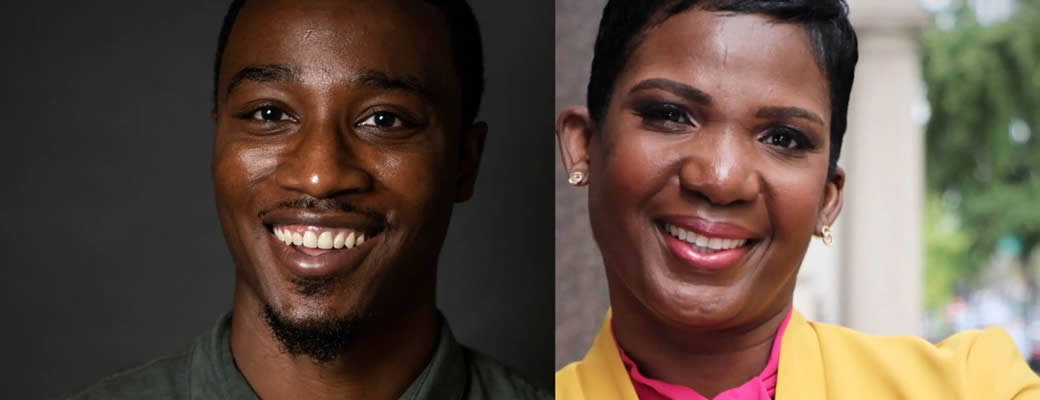New Media Guide Aims to Close Coverage Gaps for Missing Black People
BET
Jasmine Browley
October 2, 2025
When someone goes missing, every second matters. Yet for decades, Black families have faced a cruel reality: their loved ones’ disappearances rarely get the same media urgency or law enforcement response as their white counterparts. This inequity has driven advocates to fight for visibility—and now, a new resource aims to change the way newsrooms cover these cases.
The Black and Missing Foundation, Inc. (BAMFI), in partnership with the Washington Association of Black Journalists (WABJ), recently released The Media Guide for Reporting on Missing Persons. The groundbreaking manual offers journalists and media professionals best practices to ensure fair, accurate, and humanizing coverage of missing persons. Despite making up just 13% to 14.4% of the U.S. population, Black people account for a disproportionately high percentage of missing persons cases compared to other groups. In 2023, Black and other minority individuals made up nearly 40% of all missing persons reports in the FBI’s cases.
A Call to Action
Natalie Wilson, BAMFI’s co-founder, says the guide was born out of frustration.
“When I read about Tamika Houston’s story and how her aunt reached out to the same reporters and networks that covered Natalee Holloway, only to be met with silence, I knew I had to jump in,” Wilson told BET. With more than 20 years in public relations, she leveraged her network to spotlight cases overlooked by mainstream outlets.
“My only strategy is really to make sure that our missing are household names, too. Visibility is key, and it can save lives.”
The disparities are stark. Black children account for about 33% of all missing children as of 2019. That number could be even higher now.
Yet media coverage—and the public mobilization it sparks—remains disproportionately thin.
Building the Guide
According to Wilson, developing the guide took almost a year and brought together a task force of 11 media professionals, from reporters to editors.
“It was so important to have the right people at the table to build this guide,” she explained. “These individuals are in the newsroom, so they know what works and what doesn’t.”
Phil Lewis, Deputy Editor at The Huffington Post and President of WABJ, said the guide fills a critical gap. “The first 24 to 48 hours are really critical in missing person cases. What we found was that a lot of newsrooms don’t have these guidelines in place,” he told BET. “That’s where this media guide steps in—to help provide newsrooms with a resource.”
The manual goes beyond general advice. It details how journalists should verify missing persons cases, choose appropriate images, avoid harmful stereotypes, and treat families with dignity. It explicitly instructs against using mugshots, party photos, or unflattering images that could criminalize or stigmatize the missing. Instead, it urges reporters to use family-approved photos that reflect the individual’s humanity.
Why Coverage Is the Difference Between Life And Death
Wilson has seen firsthand how visibility changes outcomes. She cited the case of Pamela Butler, who disappeared from Washington, D.C.
“Our strategy was to get media coverage to put pressure on law enforcement. And it worked. Although the case was over 10 years old, a new detective saw something no one else did and solved Pamela’s murder. He also discovered that the suspect had killed his first wife,” she said. “That’s the power of media coverage.”
In another instance, Wilson recalled calling a producer at NBC4 to cover two missing girls in the District. The families had already reached out, but their pleas went unanswered until BAMFI intervened. “Media coverage really works, and it mobilizes our community to spring into action,” she said.
Shifting Newsroom Culture
The guide doesn’t just target reporters—it challenges newsroom leadership to rethink priorities. “If you [the reporter] called, and I called, and Phil [Lewis] called, there’s a middle-aged white man (running a newsroom) who is mostly thinking about ratings and advertisement dollars, which I get,” Wilson said. “But we have to remember, these are valuable members of our community who are missing. There needs to be guidelines in place so that we can do away with inherent biases.”
Lewis sees the guide as an extension of Black journalists’ historic role.
“One thing that the Black press has always tried to do is help uplift each other’s stories,” he said. “We can’t wait on other outlets to share the stories that we find important. So we rely on each other.”
He added that part of his role is amplifying the guide’s message through his platform. “When I posted about the launch, over 2,000 people retweeted it. People said, ‘This is important work that people need to know about.’ I’m trying to use my own power as a journalist and someone that people find stories from, and find news from to do that.”
Looking Ahead
Wilson and Lewis stress that the guide is only the beginning. “This is our first guide, and we want newsrooms across the country to take a look at it and give us feedback,” Wilson said.
At its core, the project is about empathy.
Both Lewis and Wilson are leaning on their strong relationships with journalists to help report and spread the word about the guide and its overall purpose.
“Many times our children are not seen as victims, and they’re adultified, especially our girls,” Wilson said. “A child cannot consent to sex. Stop saying child prostitution. Stop classifying them as runaways.
She pointed out that this is an issue that could touch anyone.
“It could be a mother, a father, a child, our neighbor that’s missing,” she said. “And we need to lead with empathy and sympathy for these individuals and their families.”
Photo credit: Damon Scheleur; Natalie Wilson

